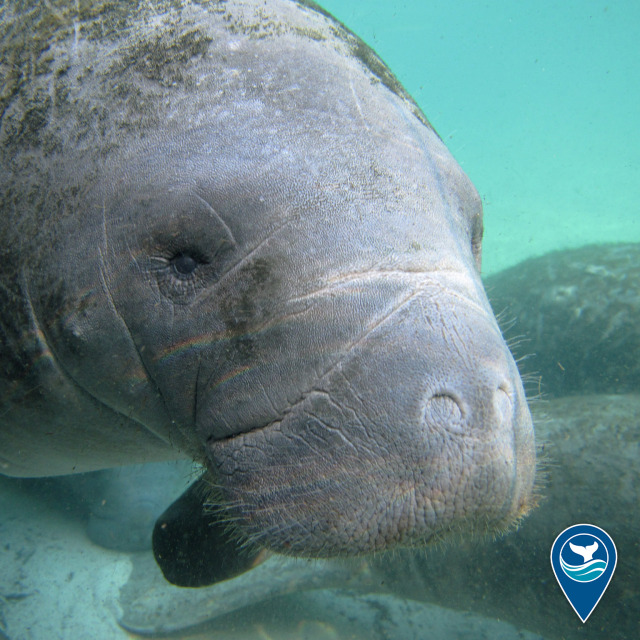#marineconservation

How’s your #NationalVolunteerWeek going?
Volunteers help to ensure national marine sanctuaries remain America’s underwater treasures for future generations. These volunteers participate in a wide variety of activities including diving, whale identification, beach cleanups, water quality monitoring, collecting field observations and surveys, acting as visitor center docents, and wildlife monitoring.
Although we think #NationalVolunteerWeek should be every week, this week we are especially appreciative of all our incredible sanctuary volunteers! Are you interested in volunteering with us? Visit https://sanctuaries.noaa.gov/involved/volunteer_future.html
Photo credit: Daryl Duda


Check out the latest poster in our 50th Anniversary #SaveSpectacular poster series!
Our new poster features Cordell Bank National Marine Sanctuary, located off the coast of Northern California. Within its 1,286 square miles, ocean conditions and undersea topography combine to fuel a rich and diverse marine community around Cordell Bank.
Take a look for yourself, and download the poster today: https://sanctuaries.noaa.gov/posters/cordell-bank/
(Illustration by Matt McIntosh/NOAA. Cordell Bank National Marine Sanctuary is a marine oasis that protects soft seafloor habitat, a rocky bank, deep sea canyons, and communities of wildlife throughout. In the poster, the rocky bank is encrusted with colorful anemones, sponges, and corals and provides habitat for species like top snails, decorator crabs, rosy rockfish, lingcod, and giant Pacific octopus. The waters above and around the bank concentrate krill, juvenile rockfish, anchovy, and jellies attracting ocean sunfish, California sea lions, and the blue whale.)

Today is National Submarine Day! What popular song does this photo remind you of?
This brightly colored submersible, called Delta, has performed more than 7,000 deep-water dives, many of which were in and around Channel Islands National Marine Sanctuary. It’s also nicknamed “the Jeep of the Seas”!

Today is the last day of #WorldWildlifeWeek and our final #WorldWildlifeWeek two truths and a lie game. Can you guess which of these three statements isn’t true about the West Indian manatee found in Florida Keys National Marine Sanctuary?
- Full grown manatees typically weigh between 400 and 500 pounds.
- Manatees eat up to 150 pounds of plants each day.
- Manatees are mammals.
Let us known the comments!
#SharkSunday to bring more understanding to humans about sharks! Blacktip Reef Shark remaining within the same local area for up to several years at a time. It is an active predator of small bony fishes, cephalopods, and crustaceans, and has also been known to feed on sea snakes and seabirds.
It typically attains a length of 1.6 m
The International Union for Conservation of Nature has assessed the C. melanopterus as Near Threatened.
When receptive to mating, a female blacktip reef shark swims slowly in a sinusoidal pattern near the bottom with her head pointed down; observations in the wild suggest female sharks release chemical signals that allow males to track them. Once the male finds her, he closes to around 15 cm and follows her with his snout oriented towards her vent. A courting male may also bite the female behind her gills or on her pectoral fins; these mating wounds heal completely after 4–6 weeks. After a period of synchronous swimming, the male pushes the female on her side and positions her so her head is against the bottom and her tail is raised. Once the female is in position, the male inserts one of his claspers into her cloaca. Copulation lasts for several minutes, after which the sharks separate and resume their regular behavior. Off Moorea, individual older females mate and give birth at a consistent time every year, often to within a week’s precision, whereas younger females exhibit more variability in their timing. Younger females are also more likely to fail to become pregnant after mating.
The gestation period has been reported as 7–11 months long. Blacktip reef sharks are viviparous, which means they give live birth after the embryos develop in the mother’s uterus.
Newborn pups measure 40–50 cm
Males and females mature sexually at lengths of 95 cm to 97 cm.
Taken by #Underwaterphotographer #DanielSasse #poseidondivecenter #natgeoyourshot #Scubadiving #Aonang #Krabi #instadive #Marinelifeprotection #Ouroceans #Underwaterphotography #natgeo #nature #uwpic #Savetheoceans #Marineconservation #Oceandefender #Saveourseas #underwaterlife #fish #ecowarrior #natgeowild #blueplanet #scubashooter
https://www.instagram.com/sasse.daniel/p/CXqpanSvghI/?utm_medium=tumblr
Post link
Sun’s out, tums out
Asteroid❤️


